Moving Average Method for Time-series forecasting
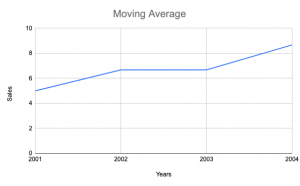
In this post, you will learn about the concepts of the moving average method in relation to time-series forecasting. You will get to learn Python examples in relation to training a moving average machine learning model. The following are some of the topics which will get covered in this post: What is the moving average method? Why use the moving average method? Python code example for the moving average methods What is Moving Average method? The moving average is a statistical method used for forecasting long-term trends. The technique represents taking an average of a set of numbers in a given range while moving the range. For example, let’s say …
Gradient Boosting Algorithm: Concepts, Example
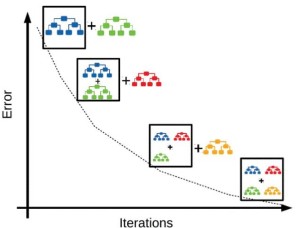
If you are a data scientist or machine learning engineer, then you know that Gradient Boosting Algorithm (GBA) is one of the most powerful algorithms in predicting results from data. This algorithm has been proven to increase the accuracy of predictions and is becoming increasingly popular among data scientists. Let’s take a closer look at GBA and explore how it works with an example. What is a Gradient Boosting Algorithm? Gradient boosting algorithm is a machine learning technique used to build predictive models. It creates an ensemble of weak learners, meaning that it combines several smaller, simpler models in order to obtain a more accurate prediction than what an …
Data Warehouse Concepts & Examples
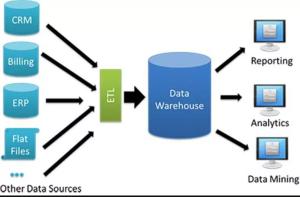
A data warehouse is a system used for reporting and data analysis, and is considered a core component of business intelligence. Data warehouses are centralized repositories of integrated data from one or more disparate sources. They store current and historical data in one single place that can be used to answer business questions. Data warehouses are used to support business intelligence applications. Business intelligence applications are used to make decisions about the operation of the business. A data warehouse is usually populated with data from an operational database, which contains transactions. The process of populating the data warehouse is called Extract, Transform, and Load (ETL). This process cleans, transforms, and …
Data Models Types, Uses & Examples
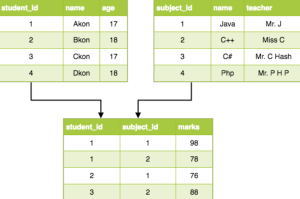
A data model is a collection of concepts that can be used to describe the structure of a database. When it comes to data modeling, there are several different types of models that data analysts and data modelers can use. There are several different types of data models, and each has its own strengths and weaknesses. Some of most popular types of data models are the relational model, the dimensional model, and the hierarchical model. In this blog post, we will provide a brief overview of different types of data model and when you might use each one with the help of real world examples. The Relational Data Model The …
Drivetrain Approach for Machine Learning

In this post, you will learn about a very popular approach or methodology called as Drivetrain approach coined by Jeremy Howard. The approach provides you steps to design data products that provide you with actionable outcomes while using one or more machine learning models. The approach is indeed very useful for data scientists/machine learning enthusiasts at all levels. However, this would prove to be a great guide for data science architects whose key responsibility includes designing the data products. Without further ado, let’s do a deep dive. Why Drivetrain Approach? Before getting into the drivetrain approach and understands the basic concepts, Lets understand why drivetrain approach in the first place? …
Machine Learning Models Evaluation Techniques
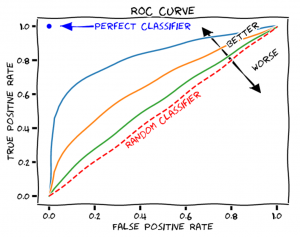
Machine learning is a powerful machine intelligence technique that can be used to develop predictive models for different types of data. It has become the backbone of many intelligent applications and evaluating machine learning model performance at a regular intervals is key to success of such applications. A machine learning model’s performance depends on several factors including the type of algorithm used, how well it was trained and more. In this blog post, we will discuss essential techniques for evaluating machine-learning model performance in order to provide you with some best practices when working with machine-learning models. The following are different techniques that can be used for evaluating machine learning …
Machine Learning Programming Languages List
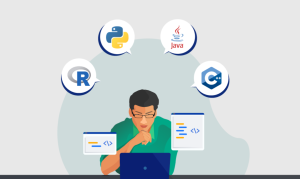
If you’re interested in pursuing a career in machine learning, you’ll need to have a firm grasp of at least one programming language. But with so many languages to choose from, which one should you learn? Here are three of the most popular machine learning programming languages, along with a brief overview of each. Python Python is a programming language with many features that make it well suited for machine learning. It has a large and active community of developers who have contributed a wide variety of libraries and tools. Python’s syntax is relatively simple and easy to learn, making it a good choice for people who are new to …
NoSQL Databases List & Examples
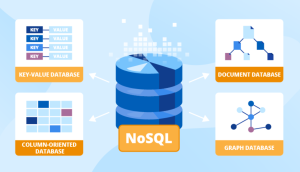
With the proliferation of big data, there has been a corresponding increase in the number of NoSQL databases. For those who are new to the term, NoSQL databases are non-relational databases that are designed to handle large amounts of data. In this blog post, we will take a look at some of the most popular NoSQL databases. NoSQL databases are a newer alternative to traditional relational databases that are designed to provide more flexibility and scalability. NoSQL databases are often used for big data applications that require real-time analysis or for applications that need to be able to handle a large amount of concurrent users. While NoSQL databases can offer …
Free Machine Learning Courses from Top US Universities

Anyone looking to start learning machine learning has a plethora of resources at their disposal. However, with so many choices it can be difficult to know where to start. This blog post will outline four free machine learning courses from top US universities such as Harvard, Stanford, MIT, etc that are sure to get you on the right track. List of Online Free Courses on Machine Learning The following is a list of online free courses on machine learning from some of the top US universities: Harvard’s CS50p: Intro to Python (cs50.harvard.edu/python/2022/) MIT 6.S191: Intro to Deep Learning (https://introtodeeplearning.com/) Cornell Tech CS 5787: Applied machine learning course (https://cornelltech.github.io/cs5785-fall-2019/) Stanford’s Machine …
Data Preprocessing Steps in Machine Learning

Data preprocessing is an essential step in any machine learning project. By cleaning and preparing your data, you can ensure that your machine learning model is as accurate as possible. In this blog post, we’ll cover some of the important and most common data preprocessing steps that every data scientist should know. Replace/remove missing data Before building a machine learning model, it is important to preprocess the data and remove or replace any missing values. Missing data can cause problems with the model, such as biased results or inaccurate predictions. There are a few different ways to handle missing data, but the best approach depends on the situation. In some …
Resume Screening using Machine Learning & NLP

In today’s job market, there are many qualified candidates vying for the same position. So, how do you weed out the applicants who are not a good fit for your company? One way to do this is by using machine learning and natural language processing (NLP) to screen resumes. By using machine learning and NLP to screen resumes, you can more efficiently identify candidates who have the skills and qualifications you are looking for. In this blog, we will learn different aspects of screening and selecting / shortlisting candidates for further processing using machine learning & NLP techniques. Key Challenges for Resume Screening / Shortlisting Resume screening is the process …
Supply chain management & Machine Learning
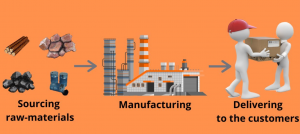
As supply chains become more complex, businesses are looking for new ways to optimize and automate their supply chain operations. One area that is seeing a lot of growth is the use of artificial intelligence (AI) and machine learning in supply chain management. There are many different applications for these technologies in supply chain management, from forecasting demand to optimizing inventory levels. In this blog post, we will explore some of the most interesting use cases for AI and machine learning in supply chain management. What is supply chain management and what are its key components? Supply chain management is the process of coordinating and controlling the flow of goods, …
List of Blockchain Platforms & Examples
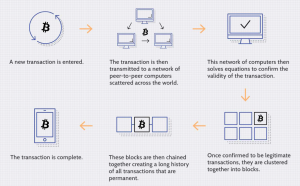
You may have heard of Bitcoin, Ethereum, or even Hyperledger, but what exactly are they? They are all examples of different types of blockchain platforms. In this blog post, we will give a detailed overview of the list of the different types of blockchain platforms and some examples to help you better understand this cutting-edge technology. Bitcoin Blockchain Bitcoin is a digital asset and a payment system invented by Satoshi Nakamoto. Transactions are verified by network nodes through cryptography and recorded in a public dispersed ledger called a blockchain. Bitcoin is unique in that there are a finite number of them: 21 million. Bitcoin blockchains function differently from traditional ledgers. …
Car Insurance & Machine Learning Use Cases

The car insurance industry is one of the many sectors that have been disrupted by the advent of machine learning. In the past, car insurance companies have relied on historical data to set premiums. However, machine learning / AI has enabled insurers to better predict risk and price insurance policies more accurately. As a result, AI / machine learning is transforming the car insurance industry by making it more efficient and customer-centric. In this blog, you will learn about some key car insurance use cases which can be dealt using machine learning. Detecting fraudulent car insurance claims Fraudulent car insurance claims are a problem for both insurers and policyholders. They …
Bagging vs Boosting Machine Learning Methods
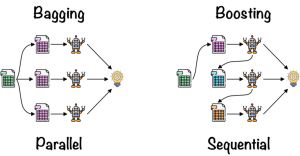
In machine learning, there are a variety of methods that can be used to improve the performance of your models. Two of the most popular methods are bagging and boosting. In this blog post, we’ll take a look at what these methods are and how they work with the help of examples. What is Bagging? Bagging, short for “bootstrap aggregating”, is a method that can be used to improve the accuracy of your machine learning models. The idea behind bagging is to train multiple models on different subsets of the data and then combine the predictions of those models. The data is split into a number of smaller datasets, or …
Weak Supervised Learning: Concepts & Examples
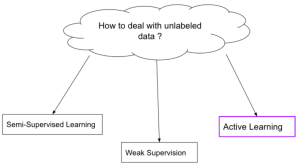
Supervised learning is a type of machine learning algorithm that uses a labeled dataset to learn and generalize from. The labels act as supervisors, providing the algorithm with feedback so it can learn to map input data to the correct output labels. In this blog post, we’ll be focusing on weak supervised learning, a subset of supervised learning that uses only partially labeled or unlabeled data. We’ll cover some of the most common weak supervision techniques and provide examples of each. What is Weak Supervised Learning? Weak supervised learning is a type of machine learning where the learner is only given a few labels to work with. Weak supervision is …
I found it very helpful. However the differences are not too understandable for me